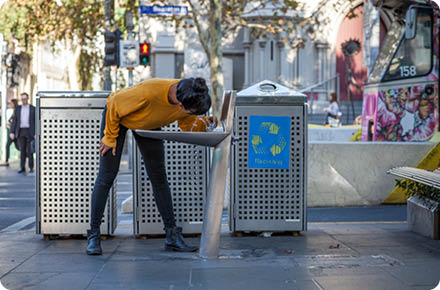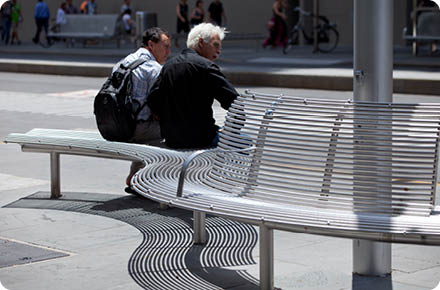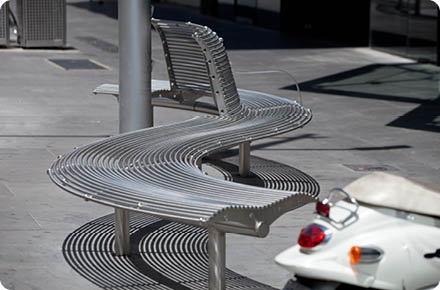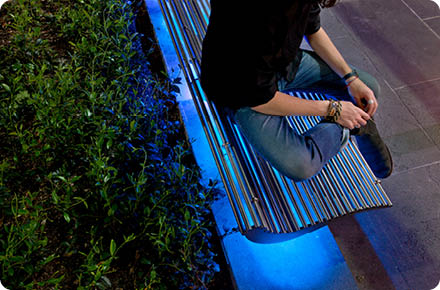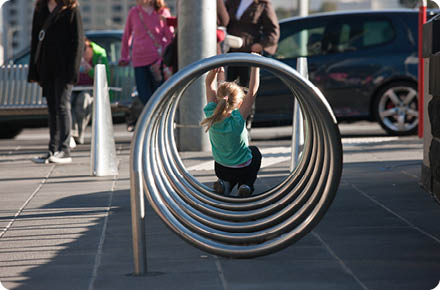Why Melbourne changed their street furniture to stainless steel
Interview with Ian Dryden, Principal Industrial Designer at the City of Melbourne
Ian Dryden is the principal industrial designer within the City Design and Project team at the City of Melbourne. Since 1987, his task has been to program, design, implement and market street furniture and temporary facilities for the city. Ian’s major task has been the design and coordination of the street furniture, temporary fixtures, kiosks, toilets, decoration, lighting systems and pedestrian information signage for the city’s master plan. Ian’s work has received both popular and professional recognition. He is a contributing member of the city’s Urban Design team, who has won a number of AIA, AILA, IES awards and international industrial design awards for the cities projects.
On Monday 17 October, Ian visited the worldstainless Offices in Brussels and spoke to Research Fellow, Frank Sukjun Yoon and Secretary-General, Tim Collins about the whys and how’s of choosing stainless steels for the street furniture in Melbourne.
